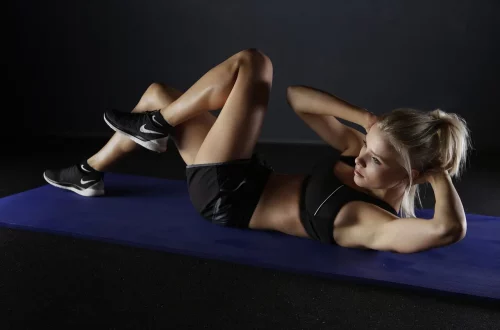
Top Exercise Equipment for Building Chest Strength and Muscle
Building chest strength and muscle is a common goal for fitness enthusiasts, athletes, and anyone looking to enhance their physique. The chest, composed of the pectoral muscles, plays a crucial role in many upper body movements and contributes significantly to overall strength and stability. Whether you are looking to improve your performance in sports, enhance your appearance, or simply stay fit, understanding the right exercise equipment can make a significant difference.
With an array of options available, it can be overwhelming to choose the right tools for chest training. From free weights to machines, each piece of equipment serves a unique purpose and can target different areas of the chest. Furthermore, incorporating a variety of equipment into your workout routine can prevent plateaus and keep your training engaging.
In this article, we will delve into some of the best exercise equipment for building chest strength and muscle, offering insights into how they can be effectively integrated into your fitness regimen. Understanding the benefits of each tool will empower you to make informed decisions that align with your fitness goals.
Free Weights: Dumbbells and Barbells
Free weights, such as dumbbells and barbells, are fundamental tools for building chest strength and muscle. They offer versatility and allow for a range of exercises that can target the pectoral muscles effectively. Dumbbells, in particular, provide an excellent opportunity for unilateral training, ensuring that both sides of the chest develop evenly.
One of the most popular exercises using dumbbells is the dumbbell bench press. This exercise targets the entire chest and also engages the shoulders and triceps. To perform this exercise, lie flat on a bench with a dumbbell in each hand. Lower the weights to your chest and then press them back up, ensuring that you maintain control throughout the movement. This will not only help in building strength but also improve muscle symmetry.
Barbells, on the other hand, are ideal for heavier lifts and can help in developing overall strength. The barbell bench press is a classic exercise that many lifters incorporate into their routines. By lying on a bench and pressing a barbell from the chest upwards, you can engage multiple muscle groups, including the pectorals, deltoids, and triceps. This compound movement allows for heavier weights to be lifted, promoting muscle growth and strength gains.
In addition to the bench press, both dumbbells and barbells can be used for various other exercises such as flyes, incline presses, and declines, allowing for comprehensive chest training. The flexibility these weights offer makes them a staple in any workout program focused on building chest strength and muscle.
Resistance Machines: A Controlled Approach
Resistance machines are an excellent option for those who prefer a more controlled environment for their workouts. These machines are designed to target specific muscle groups while providing support and stability, making them ideal for both beginners and experienced lifters. They can help individuals focus on their form and reduce the risk of injury, particularly when performing exercises that may be challenging with free weights.
One of the most effective resistance machines for chest training is the chest press machine. This machine mimics the motion of a bench press but provides a guided path for the weights. The chest press machine focuses specifically on the pectoral muscles while also engaging the shoulders and triceps. By adjusting the seat height and weight, users can customize their workout to suit their fitness level and goals.
Another valuable machine for chest training is the pec deck machine, which isolates the pectoral muscles effectively. This machine allows for a range of motion that targets the chest from various angles, promoting muscle hypertrophy. By sitting on the machine and bringing the arms together in front of the chest, users can achieve a strong contraction of the pectoral muscles, enhancing muscle growth.
Incorporating resistance machines into your workout routine can provide a balanced approach to chest training. They are beneficial for those who may be recovering from an injury or are new to strength training. Moreover, they can complement free weight exercises by allowing you to focus on specific muscle areas and enhance overall chest development.
Bodyweight Exercises: No Equipment Needed
Bodyweight exercises are an effective way to build chest strength and muscle without the need for any equipment. These exercises rely on your body weight as resistance and can be done anywhere, making them incredibly accessible. Incorporating bodyweight movements into your routine can help increase strength, improve muscular endurance, and enhance overall fitness.
Push-ups are one of the most well-known bodyweight exercises and are excellent for targeting the chest, shoulders, and triceps. They can be modified to suit different fitness levels, from standard push-ups to knee push-ups and elevated variations. To perform a push-up, start in a plank position, lower your body towards the ground, and then push back up. This exercise not only builds chest strength but also engages the core and stabilizing muscles.
Another effective bodyweight exercise is the dip. While dips primarily target the triceps, they also engage the pectoral muscles significantly. Using parallel bars, lower your body by bending your elbows and then push back up. This exercise can be challenging but is highly effective for building upper body strength.
In addition to push-ups and dips, there are numerous variations and combinations of bodyweight exercises that can provide a comprehensive chest workout. Incorporating these movements into your training routine can enhance muscular endurance and strength, making them an invaluable part of any fitness regimen.
Resistance Bands: Versatile and Portable
Resistance bands have gained popularity as a versatile and portable option for strength training, including chest workouts. These bands come in various resistance levels, allowing users to customize their workouts according to their strength and fitness goals. They are particularly beneficial for those who may not have access to traditional gym equipment or who prefer to work out at home.
One effective exercise using resistance bands for chest training is the banded chest press. To perform this exercise, anchor the band behind you, hold the handles, and press forward until your arms are fully extended. This movement mimics the motion of a bench press but provides constant tension throughout the exercise, promoting muscle engagement.
Another valuable exercise is the banded fly. By anchoring the band at shoulder height, users can perform a fly motion by bringing their arms together in front of their chest. This exercise effectively targets the pectoral muscles and can be adjusted for intensity by changing the band’s resistance or the angle of the movement.
Resistance bands are not only effective for building chest strength but also for improving mobility and flexibility. They can be easily incorporated into any workout routine and are an excellent tool for warming up or cooling down. Their portability makes them an ideal choice for those who travel frequently or prefer home workouts.
Incorporating resistance bands into your chest training can provide a refreshing change to your routine and help you achieve your strength and muscle-building goals.
In conclusion, building chest strength and muscle requires a combination of effective exercises and the right equipment. Whether you prefer free weights, resistance machines, bodyweight exercises, or resistance bands, each option offers unique benefits that can enhance your training regimen. By incorporating a variety of these tools into your workouts, you can target the chest muscles effectively, prevent plateaus, and keep your fitness journey engaging. Remember, consistency is key, and listening to your body will always lead you towards better results.
**Disclaimer:** This article is not intended as medical advice. Always consult a healthcare professional for any health concerns or before starting a new exercise program.




